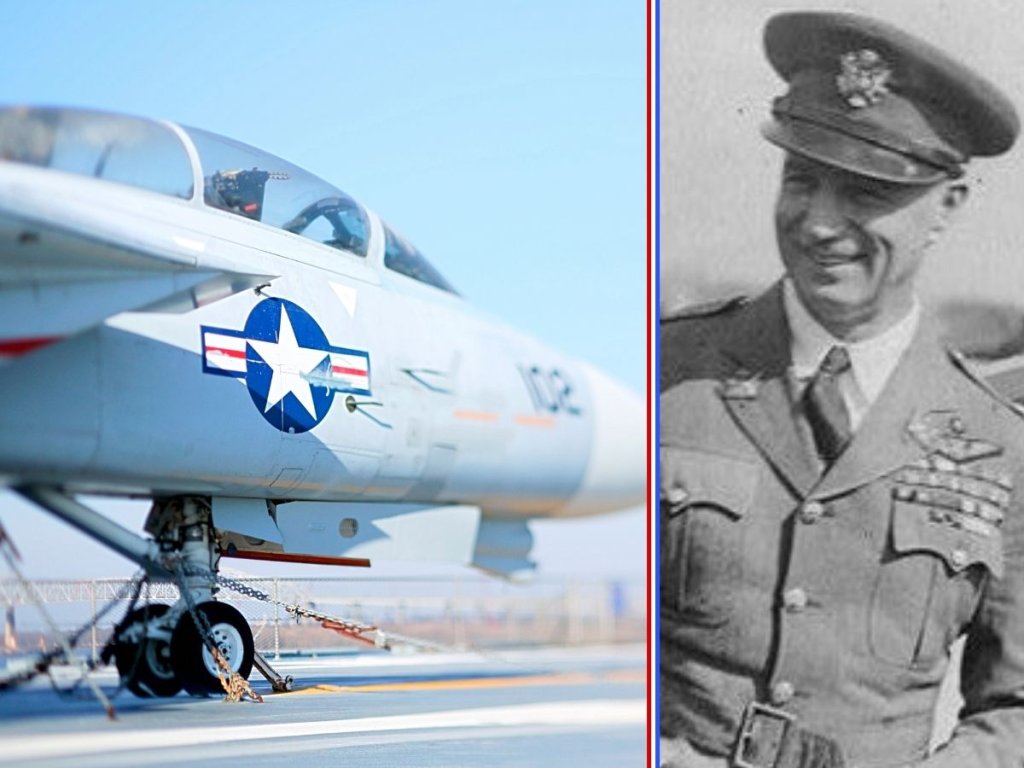

Gen. William “Billy” Mitchell was an Army officer at the beginning of the 1900s who campaigned for a separate Air Force that would revolutionize warfare. While most of his predictions about American airpower ultimately came true, Mitchell was dismissed as a radical in his day and convicted of insubordination.
Mitchell joined the Army in 1898 during the Spanish-American War, seven years before airplanes were a thing and 11 years before the military bought it’s first one.
Mitchell rose through the ranks quickly and was named deputy commander of Army Aviation shortly after his promotion to major. He requested permission to become an Army pilot, but as a 38-year-old major he was declared too senior in age and rank to become a pilot.
So he paid for his own lessons out of pocket. By 1917 he was an accomplished aviator and was promoted to brigadier general. He took command of all U.S. Army aerial combat planes in France and led 1,481 planes into combat against the Germans at the Battle of St. Mihiel.
After the war Mitchell continued pushing for a separate Air Force and claimed that a flight of bombers could destroy any battleship in existence, a claim he proposed testing by bombing actual battleships captured in World War I.

Mitchell eventually got his wish, and a series of demonstrations were scheduled for Jun.-Jul. 1921 where Mitchell’s forces would bomb three captures German ships and three surplus U.S. ships.
The crown jewel of the test targets from the German battleship Ostfriesland, scheduled for bombing Jul. 20-21. The tests were a resounding success. In full view of Navy brass and the American press, every ship was torn apart by aerial bombardment.

The Ostfriesland was hit with armor piercing, 2,000-pound bombs specially designed for use against naval ships. Unfortunately, the Navy claimed that Mitchell overstepped the parameters of the test and Congress just ignored the results.
The friction between Mitchell and the Navy and Congress grew, until two major accidents by the Navy. In one, three planes flying from the West Coast to Hawaii were lost and in another the USS Shenandoah Airship was destroyed with the loss of 14 sailors.
Mitchell took to the press to blast the Navy and Army brass who he believed had failed their subordinates.
“These incidents are the direct result of the incompetency, criminal negligence and almost treasonable administration of the national defense by the Navy and War Departments,” Mitchell said. “The bodies of my former companions in the air moulder under the soil in America, and Asia, Europe and Africa, many, yes a great many, sent there directly by official stupidity.”
Mitchell was quickly brought up on Article 96 of the Articles of War which prohibits “all disorders and neglects to the prejudice of good order and discipline.”
His trial was a national sensation, attended by societal elite and crowds of veterans. Mitchell’s lawyer tried to argue that Mitchell’s freedom of speech trumped his duties as an officer, but the defense easily ripped through the argument by pointing out allowing complete freedom of speech in the military could create anarchy.
Mitchell was sentenced to five years suspension without pay or duty, during which time he could not accept civilian employment. When the decision reached President Calvin Coolidge, Coolidge amended them to allow the general half pay and a subsistence allowance.
Mitchell opted to resign his commission instead. He launched a speaking tour that traveled around the country and promoted air power.
He died in 1936 and so was not able to see his prophecies come true in World War II. The Air Force Association tried to get his conviction overturned in 1955, but the secretary of the Air Force left it in place because Mitchell did commit the crimes. President Harry S. Truman authorized a special posthumous award for Mitchell in 1946, recognizing Mitchell’s work to create modern military aviation.
